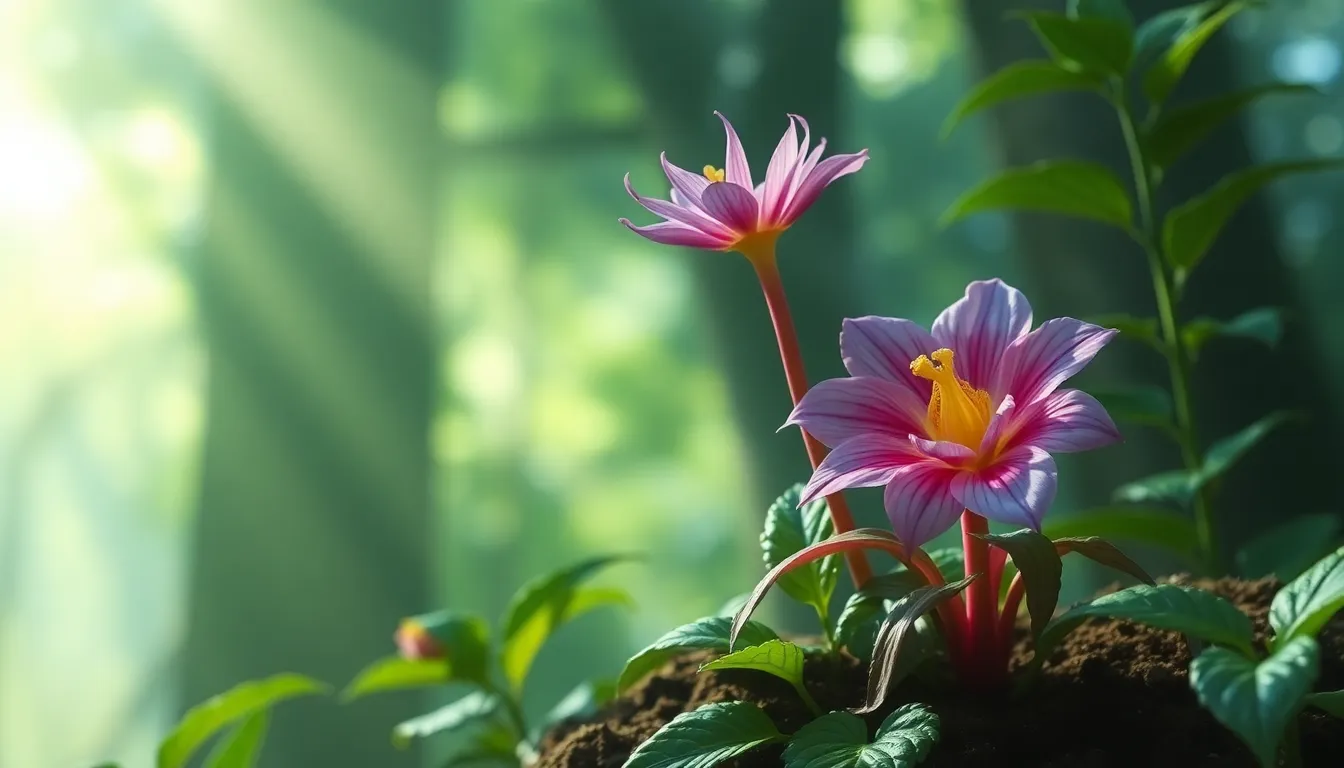Plant Myths That Will Change Your Perspective on Nature
I. Introduction
Plants play a vital role in our ecosystems, providing oxygen, habitat, and food for countless organisms. They are essential for maintaining the balance of life on Earth, yet many misconceptions about them persist. These myths can distort our understanding of nature and the intricate relationships that exist within it.
Myths often arise from cultural narratives or limited scientific knowledge, shaping how we perceive the natural world. This article aims to debunk some common myths about plants and reveal surprising truths that may change your perspective on nature.
II. Myth 1: All Plants Need Sunlight to Survive
One of the most pervasive myths is that all plants require sunlight to thrive. While it’s true that many plants are photosynthetic and depend on sunlight for energy, there are numerous exceptions to this rule.
Shade-tolerant plants have adapted to survive in low-light environments, often found in dense forests or under the canopy of larger trees. These plants have developed characteristics that allow them to maximize their energy intake even in limited light.
- Ferns: These ancient plants thrive in shaded areas and have evolved to utilize diffuse light efficiently.
- Mushrooms: As fungi, they do not perform photosynthesis and instead derive nutrients from decaying organic matter.
- Non-photosynthetic organisms: Some plants, like the corpse flower, have adapted to live without sunlight by forming symbiotic relationships with fungi.
III. Myth 2: Plants Don’t Communicate
Many people believe that plants are silent and solitary organisms, lacking any form of communication. However, research has shown that plants engage in complex signaling and communication.
Plants can communicate through their root systems and utilize mycorrhizal networks, often referred to as the “Wood Wide Web.” These underground connections allow plants to share nutrients and information about environmental stressors.
For example, when a plant is attacked by pests, it can release volatile organic compounds that alert neighboring plants, prompting them to activate their own defense mechanisms.
IV. Myth 3: Cacti Are the Only Succulents
The term “succulent” refers to a broader category of plants that have thick, fleshy tissues adapted for water storage. While cacti are well-known succulents, they are not the only representatives of this group.
- Aloe: Known for its medicinal properties, aloe vera is a succulent that thrives in arid conditions.
- Agave: This plant is often used to produce tequila and has thick, fleshy leaves that store water.
- Jade Plant: A popular houseplant, the jade plant is a succulent that can live for decades with minimal care.
Succulents play diverse roles in different ecosystems, from providing food for animals to stabilizing soil in arid regions.
V. Myth 4: All Plants Are Static and Motionless
It is a common misconception that plants are completely static and do not move. In reality, plants exhibit various types of movement that are crucial for their survival.
Plant movements can be categorized into two main types: tropisms and nastic movements.
- Tropisms: These are directional growth movements in response to environmental stimuli. For example, plants will bend toward sunlight (phototropism) or grow roots downward (gravitropism).
- Nastic movements: These are non-directional movements, such as the closing of a Venus flytrap or the opening and closing of flowers in response to light and temperature.
Such movements are essential not only for optimizing light absorption but also for attracting pollinators and enhancing reproductive success.
VI. Myth 5: Orchids Are Difficult to Grow
Many gardening enthusiasts believe that orchids are finicky and difficult to cultivate. However, this myth can deter people from appreciating these beautiful plants.
While some orchid species may have specific care requirements, many are adaptable and can thrive in a variety of conditions. With the right knowledge, anyone can successfully grow orchids.
- Choose the right species: Some orchids, like Phalaenopsis, are more forgiving and easier to care for than others.
- Provide adequate light: Most orchids prefer bright, indirect light.
- Water properly: Allow the potting medium to dry out between waterings to prevent root rot.
The diversity of orchids is astounding, with thousands of species adapted to various environments, from tropical rainforests to temperate regions.
VII. Myth 6: Native Plants Are Always Better for the Environment
While native plants offer numerous ecological benefits, the idea that they are always superior can be misleading. Native plants are adapted to local conditions and can support local wildlife, but non-native species can also play important roles in ecosystems.
Non-native plants can provide critical resources, especially in disturbed habitats. Some non-native species can enhance biodiversity and fill ecological niches that native plants may not occupy.
Balancing native and non-native plants is essential for maintaining biodiversity and ensuring resilient ecosystems.
VIII. Myth 7: Plants Have No Emotions
It is a common belief that plants do not have emotions. However, recent research suggests that plants can exhibit responses to stimuli that may resemble emotional reactions.
Plants can sense their environment and respond to stressors, such as drought or injury, by altering their growth patterns or releasing chemical signals.
For example, studies have shown that some plants can “remember” past stress and adjust their growth accordingly, indicating a level of awareness and adaptability.
IX. Myth 8: The Only Purpose of Plants Is to Provide Food for Humans
While plants indeed provide food for humans, their ecological roles extend far beyond this function. They are integral to numerous processes that sustain life on Earth.
- Carbon sequestration: Plants absorb carbon dioxide, helping to mitigate climate change.
- Habitat creation: They provide essential habitats for countless species, contributing to biodiversity.
- Cultural significance: Plants have aesthetic, medicinal, and cultural importance in human societies, influencing art, tradition, and wellness.
X. Conclusion
Understanding the truths about plants can profoundly change our perspective on nature. By debunking common myths, we can appreciate the complexity and importance of plants in our ecosystems.
From their ability to communicate and adapt to their diverse roles in the environment, plants are far more dynamic than we often realize. Embracing these truths can lead to a deeper respect for the natural world and inspire us to protect and nurture it for generations to come.


